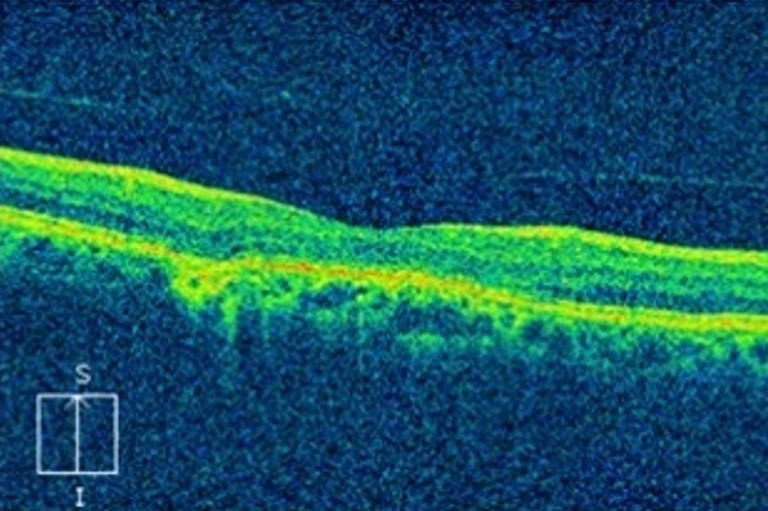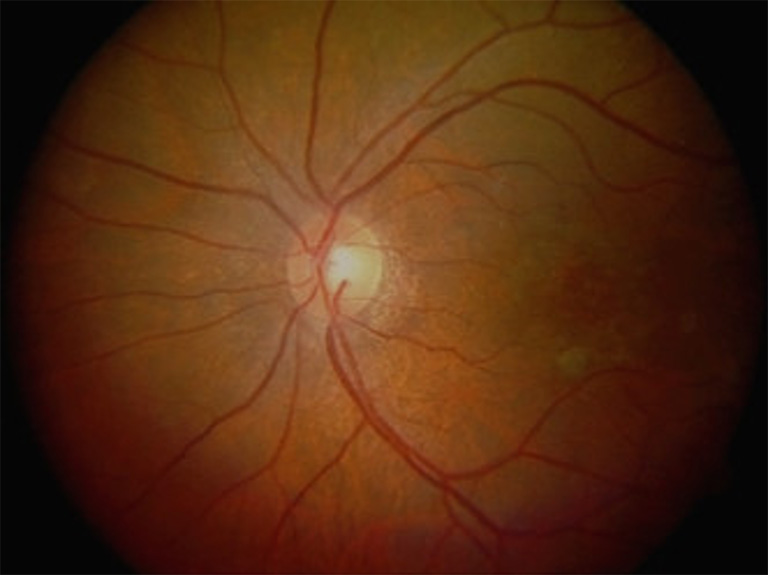1、Bara?ano AE, Wu J, Mazhar K, et al. Visual acuity outcomes after cataract extraction in adult Latinos. The Los Angeles Latino Eye Study[ J]. Ophthalmology, 2008, 115(5): 815-821Bara?ano AE, Wu J, Mazhar K, et al. Visual acuity outcomes after cataract extraction in adult Latinos. The Los Angeles Latino Eye Study[ J]. Ophthalmology, 2008, 115(5): 815-821
2、Huang W, Huang G, Wang D, et al. Outcomes of cataract surgery in urban southern China: the Liwan Eye Study[ J]. Invest Ophthalmol Vis Sci, 2011, 52(1): 16-20Huang W, Huang G, Wang D, et al. Outcomes of cataract surgery in urban southern China: the Liwan Eye Study[ J]. Invest Ophthalmol Vis Sci, 2011, 52(1): 16-20
3、Stürmer J. Cataracts - trend and new developments[ J]. Ther Umsch, 2009, 66(3): 167-171Stürmer J. Cataracts - trend and new developments[ J]. Ther Umsch, 2009, 66(3): 167-171
4、赵家良. “视觉2020”行动与我国防盲治盲工作[ J]. 中华眼科杂志, 2002, 38(10): 577-579.ZHAO Jialiang. “Vision 2020” action and prevention and treatment of blindness in China[ J]. Chinese Journal of Ophthalmology, 2002, 38(10): 577-579.赵家良. “视觉2020”行动与我国防盲治盲工作[ J]. 中华眼科杂志, 2002, 38(10): 577-579.ZHAO Jialiang. “Vision 2020” action and prevention and treatment of blindness in China[ J]. Chinese Journal of Ophthalmology, 2002, 38(10): 577-579.
5、赵家良. 在新形势下继续推进我国的防盲治盲工作[ J]. 中华眼科杂志, 2011, 47(9): 769-772.ZHAO Jialiang. To promote “Vision 2020” initiative under the new situation in China[ J]. Chinese Journal of Ophthalmology, 2011, 47(9): 769-772.赵家良. 在新形势下继续推进我国的防盲治盲工作[ J]. 中华眼科杂志, 2011, 47(9): 769-772.ZHAO Jialiang. To promote “Vision 2020” initiative under the new situation in China[ J]. Chinese Journal of Ophthalmology, 2011, 47(9): 769-772.
6、World Health Organization. Informal consultation on analysis of blindness prevention outcomes[R]. Geneva: WHO, 1998.World Health Organization. Informal consultation on analysis of blindness prevention outcomes[R]. Geneva: WHO, 1998.
7、Liu B, Xu L, Wang YX, et al. Prevalence of cataract surgery and postoperative visual outcome in Greater Beijing: the Beijing Eye Study[ J]. Ophthalmology, 2009, 116(7): 1322-1331.Liu B, Xu L, Wang YX, et al. Prevalence of cataract surgery and postoperative visual outcome in Greater Beijing: the Beijing Eye Study[ J]. Ophthalmology, 2009, 116(7): 1322-1331.
8、Zhao J, Ellwein LB, Cui H, et al. Prevalence and outcomes of cataract surgery in rural China the China nine-province survey[ J]. Ophthalmology, 2010, 117(11): 2120-2128.Zhao J, Ellwein LB, Cui H, et al. Prevalence and outcomes of cataract surgery in rural China the China nine-province survey[ J]. Ophthalmology, 2010, 117(11): 2120-2128.
9、Lavanya R, Wong TY, Aung T, et al. Prevalence of cataract surgery and post-surgical visual outcomes in an urban Asian population: the Singapore Malay Eye Study[ J]. Br J Ophthalmol, 2009, 93(3): 299-304.Lavanya R, Wong TY, Aung T, et al. Prevalence of cataract surgery and post-surgical visual outcomes in an urban Asian population: the Singapore Malay Eye Study[ J]. Br J Ophthalmol, 2009, 93(3): 299-304.
10、Kandel RP, Sapkota YD, Sherchan A, et al. Cataract surgical outcome and predictors of outcome in Lumbini Zone and Chitwan District of Nepal[ J]. Ophthalmic Epidemiol, 2010, 17(5): 276-281.Kandel RP, Sapkota YD, Sherchan A, et al. Cataract surgical outcome and predictors of outcome in Lumbini Zone and Chitwan District of Nepal[ J]. Ophthalmic Epidemiol, 2010, 17(5): 276-281.
11、Kumar K, Gupta VP, Dhaliwal U. Causes of sub-optimal cataract surgical outcomes in patients presenting to a teaching hospital[ J]. Nepal J Ophthalmol, 2012, 4(1): 73-79.Kumar K, Gupta VP, Dhaliwal U. Causes of sub-optimal cataract surgical outcomes in patients presenting to a teaching hospital[ J]. Nepal J Ophthalmol, 2012, 4(1): 73-79.
12、Rossetti L, Autelitano A. Cystoid macular edema following cataract surgery[ J]. Curr Opin Ophthalmol, 2000, 11(1): 65-72.Rossetti L, Autelitano A. Cystoid macular edema following cataract surgery[ J]. Curr Opin Ophthalmol, 2000, 11(1): 65-72.
13、Nelson ML, Martidis A. Managing cystoid macular edema after cataract surgery[ J]. Curr Opin Ophthalmol, 2003, 14(1): 39-43.Nelson ML, Martidis A. Managing cystoid macular edema after cataract surgery[ J]. Curr Opin Ophthalmol, 2003, 14(1): 39-43.
14、Vivekanand U, Shetty A, Kulkarni C. Cataract surgery outcome at a rural eye care hospital in India[ J]. Trop Doct, 2011, 41(4): 253-256.Vivekanand U, Shetty A, Kulkarni C. Cataract surgery outcome at a rural eye care hospital in India[ J]. Trop Doct, 2011, 41(4): 253-256.
15、Pai SG, Kamath SJ, Kedia V, et al. Cataract surgery in camp patients: a study on visual outcomes[ J]. Nepal J Ophthalmol, 2011, 3(2): 159-164.Pai SG, Kamath SJ, Kedia V, et al. Cataract surgery in camp patients: a study on visual outcomes[ J]. Nepal J Ophthalmol, 2011, 3(2): 159-164.
16、Paracha Q. Cataract surgery at Marie Adelaide Leprosy Centre Karachi: an audit[ J]. J Pak Med Assoc, 2011, 61(7): 688-690.Paracha Q. Cataract surgery at Marie Adelaide Leprosy Centre Karachi: an audit[ J]. J Pak Med Assoc, 2011, 61(7): 688-690.
17、Nangia V, Jonas JB, Gupta R, et al. Prevalence of cataract surgery and postoperative visual outcome in rural central India Central India Eye and Medical Study[J]. J Cataract Refract Surg, 2011, 37(11): 1932-1938.Nangia V, Jonas JB, Gupta R, et al. Prevalence of cataract surgery and postoperative visual outcome in rural central India Central India Eye and Medical Study[J]. J Cataract Refract Surg, 2011, 37(11): 1932-1938.
18、Wang S, Peng Q, Zhao P. SD-OCT use in myopic retinoschisis pre- and post-vitrectomy[ J]. Optom Vis Sci, 2012, 89(5): 678-683.Wang S, Peng Q, Zhao P. SD-OCT use in myopic retinoschisis pre- and post-vitrectomy[ J]. Optom Vis Sci, 2012, 89(5): 678-683.
19、Madjarov B, Hilton GF, Brinton DA, et al. A new classification of the retinoschises[ J]. Retina, 1995, 15(4): 282-285.Madjarov B, Hilton GF, Brinton DA, et al. A new classification of the retinoschises[ J]. Retina, 1995, 15(4): 282-285.
20、Shimada N, Ohno-Matsui K, Baba T, et al. Natural course of macular retinoschisis in highly myopic eyes without macular hole or retinal detachment[ J]. Am J Ophthalmol, 2006, 142(3): 497-500.Shimada N, Ohno-Matsui K, Baba T, et al. Natural course of macular retinoschisis in highly myopic eyes without macular hole or retinal detachment[ J]. Am J Ophthalmol, 2006, 142(3): 497-500.
21、Giovannini A, Amato GP, Mariotti C, et al. OCT imaging of choroidal neovascularisation and its role in the determination of patients' eligibility for surgery[ J]. Br J Ophthalmol, 1999, 83(4): 438-442.Giovannini A, Amato GP, Mariotti C, et al. OCT imaging of choroidal neovascularisation and its role in the determination of patients' eligibility for surgery[ J]. Br J Ophthalmol, 1999, 83(4): 438-442.
22、Sayanagi K, Sharma S, Yamamoto T, et al. Comparison of spectral-domain versus time-domain optical coherence tomography in management of age-related macular degeneration with ranibizumab[ J]. Ophthalmology, 2009, 116(5): 947-955.Sayanagi K, Sharma S, Yamamoto T, et al. Comparison of spectral-domain versus time-domain optical coherence tomography in management of age-related macular degeneration with ranibizumab[ J]. Ophthalmology, 2009, 116(5): 947-955.
23、Hee MR, Izatt JA, Swanson EA, et al. Optical coherence tomography of the human retina[ J]. Arch Ophthalmol, 1995, 113(3): 325-332.Hee MR, Izatt JA, Swanson EA, et al. Optical coherence tomography of the human retina[ J]. Arch Ophthalmol, 1995, 113(3): 325-332.
24、Kim YG, Baek SH, Moon SW, et al. Analysis of spectral domain optical coherence tomography findings in occult macular dystrophy[ J]. Acta Ophthalmol, 2011, 89(1): e52-e56.Kim YG, Baek SH, Moon SW, et al. Analysis of spectral domain optical coherence tomography findings in occult macular dystrophy[ J]. Acta Ophthalmol, 2011, 89(1): e52-e56.
25、Baskin DE. Optical coherence tomography in diabetic macular edema[ J]. Curr Opin Ophthalmol, 2010, 21(3): 172-177.Baskin DE. Optical coherence tomography in diabetic macular edema[ J]. Curr Opin Ophthalmol, 2010, 21(3): 172-177.
26、Okamoto F, Sugiura Y, Okamoto Y, et al. Associations between metamorphopsia and foveal microstructure in patients with epiretinal membrane[ J]. Invest Ophthalmol Vis Sci, 2012, 53(11): 6770-6775.Okamoto F, Sugiura Y, Okamoto Y, et al. Associations between metamorphopsia and foveal microstructure in patients with epiretinal membrane[ J]. Invest Ophthalmol Vis Sci, 2012, 53(11): 6770-6775.
27、Ota M, Tsujikawa A, Murakami T, et al. Foveal photoreceptor layer in eyes with persistent cystoid macular edema associated with branch retinal vein occlusion[ J]. Am J Ophthalmol, 2008, 145(2): 273-280.Ota M, Tsujikawa A, Murakami T, et al. Foveal photoreceptor layer in eyes with persistent cystoid macular edema associated with branch retinal vein occlusion[ J]. Am J Ophthalmol, 2008, 145(2): 273-280.
28、Kim YJ, Joe SG, Lee DH, et al. Correlations between spectral-domain OCT measurements and visual acuity in cystoid macular edema associated with retinitis pigmentosa[ J]. Invest Ophthalmol Vis Sci, 2013, 54(2): 1303-1309.Kim YJ, Joe SG, Lee DH, et al. Correlations between spectral-domain OCT measurements and visual acuity in cystoid macular edema associated with retinitis pigmentosa[ J]. Invest Ophthalmol Vis Sci, 2013, 54(2): 1303-1309.
29、Lee CS, Koh HJ, Lim HT, et al. Prognostic factors in vitrectomy for lamellar macular hole assessed by spectral-domain optical coherence tomography[ J]. Acta Ophthalmol, 2012, 90(8): e597-e602.Lee CS, Koh HJ, Lim HT, et al. Prognostic factors in vitrectomy for lamellar macular hole assessed by spectral-domain optical coherence tomography[ J]. Acta Ophthalmol, 2012, 90(8): e597-e602.
30、Kim YM, Kim JH, Koh HJ. Improvement of photoreceptor integrity and associated visual outcome in neovascular age-related macular degeneration[ J]. Am J Ophthalmol, 2012, 154(1): 164-173.e1.Kim YM, Kim JH, Koh HJ. Improvement of photoreceptor integrity and associated visual outcome in neovascular age-related macular degeneration[ J]. Am J Ophthalmol, 2012, 154(1): 164-173.e1.
31、Matsumiya W, Kusuhara S, Shimoyama T, et al. Predictive value of preoperative optical coherence tomography for visual outcome following macular hole surgery: effects of imaging alignment[ J]. Jpn J Ophthalmol, 2013, 57(3): 308-315.Matsumiya W, Kusuhara S, Shimoyama T, et al. Predictive value of preoperative optical coherence tomography for visual outcome following macular hole surgery: effects of imaging alignment[ J]. Jpn J Ophthalmol, 2013, 57(3): 308-315.
32、Sayanagi K, Ikuno Y, Soga K, et al. Photoreceptor inner and outer segment defects in myopic foveoschisis[ J]. Am J Ophthalmol, 2008, 145(5): 902-908.Sayanagi K, Ikuno Y, Soga K, et al. Photoreceptor inner and outer segment defects in myopic foveoschisis[ J]. Am J Ophthalmol, 2008, 145(5): 902-908.
33、Browning DJ, Glassman AR, Aiello LP, et al. Relationship between optical coherence tomography-measured central retinal thickness and visual acuity in diabetic macular edema[ J]. Ophthalmology, 2007, 114(3): 525-536.Browning DJ, Glassman AR, Aiello LP, et al. Relationship between optical coherence tomography-measured central retinal thickness and visual acuity in diabetic macular edema[ J]. Ophthalmology, 2007, 114(3): 525-536.
34、Falkner-Radler CI, Glittenberg C, Hagen S, et al. Spectral-domain optical coherence tomography for monitoring epiretinal membrane surgery[ J]. Ophthalmology, 2010, 117(4): 798-805.Falkner-Radler CI, Glittenberg C, Hagen S, et al. Spectral-domain optical coherence tomography for monitoring epiretinal membrane surgery[ J]. Ophthalmology, 2010, 117(4): 798-805.




